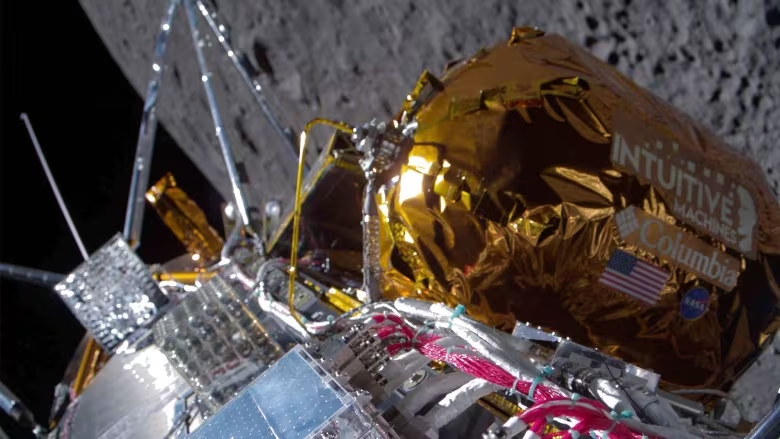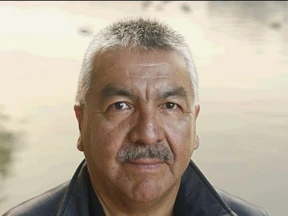
The Odysseus lunar lander, created by Intuitive Machines based in the United States, was observed soaring above the near side of the moon after successfully entering lunar orbit one day before its groundbreaking touchdown on the moon's surface. (Image credit: Intuitive Machines/The Associated Press)
In a tense and nail-biting moment reminiscent of space exploration's early days, a private lunar lander, Odysseus, touched down on the moon after a journey of more than 400,000 kilometres. However, excitement quickly turned to apprehension as controllers in Houston waited anxiously for confirmation from the spacecraft, only to receive a weak signal.
The atmosphere in the company's command centre was thick with anticipation as flight controllers monitored the situation. Would the spacecraft deliver the long-awaited confirmation of its successful landing, or would it remain shrouded in silence?
Finally, after what felt like an eternity, a faint signal emerged from the lunar surface, signalling that Odysseus had indeed landed upright. Despite this initial communication hiccup, Intuitive Machines, the company behind the mission, breathed a collective sigh of relief as they confirmed their equipment's presence on the moon.
However, crucial details remained elusive. Had Odysseus reached its intended destination near the moon's South Pole? As speculation mounted, the company's live webcast ended abruptly following the detection of a solitary, feeble signal from the lander.
Mission director Tim Crain's announcement that their equipment had successfully touched down on the lunar surface provided some reassurance amidst the tension gripping the control centre. "We can confirm, without a doubt, that our equipment is on the surface of the moon," Crain reported, offering a glimmer of hope to the gathered team.
Intuitive Machines CEO Steve Altemus echoed Crain's sentiment, expressing relief and triumph despite the communication challenges. "I know this was a nail-biter, but we are on the surface, and we are transmitting. Welcome to the moon," Altemus declared, embodying the spirit of exploration and achievement.
As the hours passed, data began to trickle in, offering a glimpse into the success of the mission. However, the journey to this momentous achievement was fraught with challenges, including a last-minute glitch with the lander's laser navigation system.
In a testament to ingenuity and teamwork, the company's flight control team swiftly improvised, utilizing an experimental NASA laser system to guide Odysseus safely to the lunar surface. With this obstacle overcome, the lander executed a choreographed descent, navigating through the rugged lunar terrain to find its designated landing spot near the South Pole.
Odysseus' successful touchdown marked a significant milestone in space exploration, marking the first U.S. lunar landing in over 50 years. Standing tall at 4.3 meters, the six-footed lander carried with it six experiments for NASA, underscoring the collaborative nature of space exploration in the 21st century.
Intuitive Machines' achievement adds to a growing list of lunar landing successes by various countries and private entities, highlighting humanity's enduring fascination with Earth's celestial neighbour. With plans for manned missions to the moon on the horizon, initiatives like Odysseus pave the way for future exploration and discovery.















